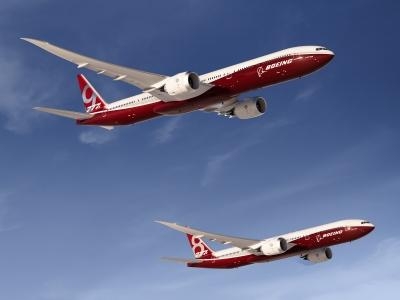Tue, Feb 11, 2014
Region Represents 36 Percent Of The World's New Airplane Deliveries
Strong economic and passenger growth will be main drivers of new airplane demand in the Asia Pacific region, according to estimates released just ahead of the Singapore Air Show by Boeing. The planemaker thinks the region's airlines will need an additional 12,820 airplanes valued at $1.9 trillion, representing 36 percent of the world's new airplane deliveries over the next 20 years.

"Asia Pacific economies and passenger traffic continue to exhibit strong growth," said Randy Tinseth, vice president, Marketing, Boeing Commercial Airplanes during a media briefing before the opening of the Singapore Airshow. "Over the next 20 years, nearly half of the world's air traffic growth will be driven by travel to, from or within the region. The Asia Pacific fleet will nearly triple, from 5,090 airplanes in 2012 to 14,750 airplanes in 2032, to support the increased demand."
Boeing's data projects that passenger airlines in the region will rely primarily on single-aisle airplanes such as the Next-Generation 737 and the 737 MAX, a new-engine variant of the market-leading 737, to connect passengers. Single-aisle airplanes will represent 69 percent of the new airplanes in the region.
"New low-cost carriers and demand for intra-Asia travel have fueled the substantial increase in single-aisle airplanes," said Tinseth. "Fuel-efficient airplanes like the Next-Generation 737 and 737 MAX help the growing number of low-cost carriers operate more efficiently and provide affordable fares to the emerging middle class."

For long-haul traffic, Boeing forecasts twin-aisle airplanes such as the 747-8 Intercontinental, 777 and the 787 Dreamliner will account for 28 percent of new airplane deliveries. Boeing's recently launched 787-10 and 777X also will support the demand for fuel-efficient twin-aisle airplanes in the region. Singapore Airlines already ordered 30 787-10s helping launch the program at the 2013 Paris Air Show and Cathay Pacific recently ordered 21 777-9X airplanes.
(Images from file)
More News
Takeoff Roll The process whereby an aircraft is aligned with the runway centerline and the aircraft is moving with the intent to take off. For helicopters, this pertains to the act>[...]
“We’re proud of the hard work that went into receiving this validation, and it will be a welcome relief to our customers in the European Union. We couldn’t be mor>[...]
"Aircraft Spruce is pleased to announce the acquisition of the parts distribution operations of Wag-Aero. Wag-Aero was founded in the 1960’s by Dick and Bobbie Wagner in the >[...]
IDENT Feature The special feature in the Air Traffic Control Radar Beacon System (ATCRBS) equipment. It is used to immediately distinguish one displayed beacon target from other be>[...]
Aero Linx: Pararescue Air Force Pararescuemen, also known as PJs, are the only DoD elite combat forces specifically organized, trained, equipped, and postured to conduct full spect>[...]
 ANN's Daily Aero-Term (05.10.24): Takeoff Roll
ANN's Daily Aero-Term (05.10.24): Takeoff Roll Aero-News: Quote of the Day (05.10.24)
Aero-News: Quote of the Day (05.10.24) Aero-News: Quote of the Day (05.11.24)
Aero-News: Quote of the Day (05.11.24) ANN's Daily Aero-Term (05.11.24): IDENT Feature
ANN's Daily Aero-Term (05.11.24): IDENT Feature ANN's Daily Aero-Linx (05.11.24)
ANN's Daily Aero-Linx (05.11.24)




